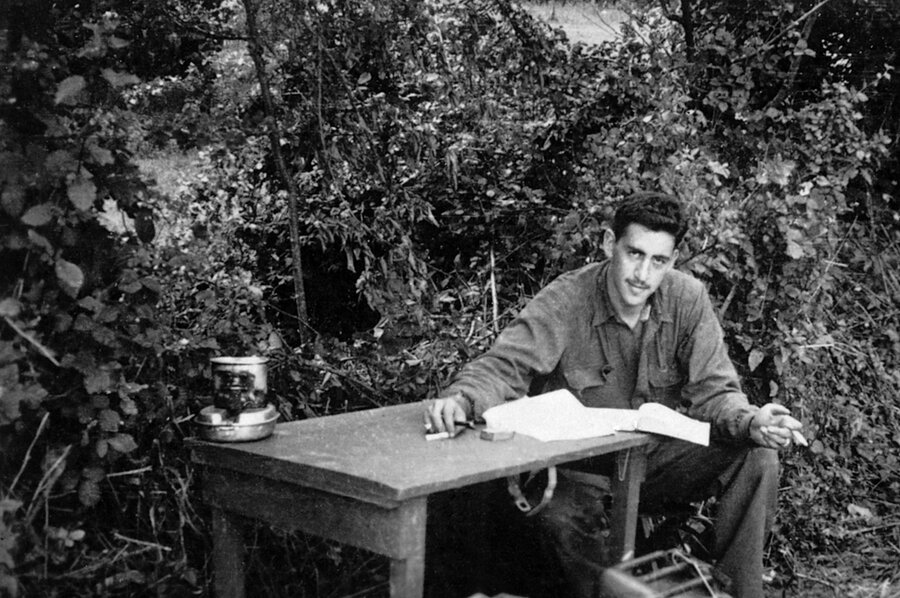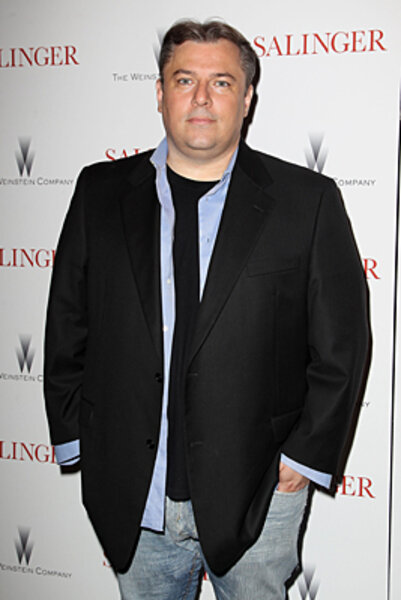'Salinger' chases a recluse out of the shadows
Loading...
By turns fascinating and infuriating, the documentary “Salinger” arrives with a public-relations fanfare not unlike Geraldo Rivera’s opening of Al Capone’s vault. The promotional campaign cautions “Uncover the Mystery but Don’t Spoil the Secrets.” The “mystery” here is the life of J.D. Salinger; one of the “secrets,” already trumpeted in advance in the press, is the tantalizing possibility that Salinger, who died in 2010 at age 91, instructed his estate to publish five additional books beginning in 2015.
Shane Salerno, who wrote and directed the film, and who also produced a just-published companion book, an oral history also titled “Salinger,” is the screenwriter of “Savages” and has also written several upcoming sequels to “Avatar.” He’s a showman who treats Salinger’s life in exposé fashion, heavy on the psychobiography. Much of what is revealed in this film has been reported in the past, though not in such detail. We hear about Salinger’s posh New York upbringing – his Jewish father, who disapproved of his son’s literary ambitions, was in the cheese business; his Roman Catholic mother was much more obliging. Tossed out of a series of prep and military schools, wanting to make his mark as an actor before discovering writing, he enlisted in the Army and landed on Normandy Beach during the Allied invasion. Likely shellshocked, working in counterintelligence directly after the war, he encountered the Nazi death camps and had a nervous breakdown. He brought back to America a German bride who, it turns out, may have been a Gestapo spy. (The marriage was dissolved almost immediately.)
Salinger had been selling stories to established magazines like Esquire, but his ambition, his obsession, was to crack The New Yorker, something he finally accomplished. When “The Catcher in the Rye,” which Salinger had been working on even in wartime, was published in 1951, it turned him into his generation’s instant guru. Its success also drove him from the New York literary scene, which he hated anyway, into reclusion in the wilds of New Hampshire, where he resided until his death. His last published story, coming after the books “Franny and Zooey” and “Raise High the Roof Beam, Carpenters,” was in 1965.
Salerno pays lip service to Salinger’s literary accomplishment, with brief talking-head segments featuring everyone from Gore Vidal and Tom Wolfe to John Guare and Robert Towne, but what really interests him is the down-and-dirty stuff. So we hear from a parade of women, often decades younger than Salinger, with whom he consorted. (Joyce Maynard, who once wrote a tell-all book about her life with Salinger, is the most prominently featured.) Salerno pushes the idea that Salinger’s early, failed love affair with the teenage Oona O’Neill, who dumped him for Charlie Chaplin no less, was a lifelong regret.
He also pushes, more plausibly, the contention that much of Salinger’s emotional difficulties were a species of post-traumatic stress disorder suffered in the wake of World War II. But there is much overreaching in this film. A talking-head voice-over tells us in doomy tones how the birth of Salinger’s daughter, Margaret (who, unlike his son, Matthew, is interviewed in the film), disrupted his ordered life. What exactly is unique about this disruption?
The film has a quote from Salinger from 1980 saying that “writing Holden was a mistake.” Some mistake: The book has sold 60 million copies and continues to sell 250,000 a year. According to this film, Salinger stipulated in his will that “The Catcher in the Rye” never be made into a movie. (Billy Wilder and Elia Kazan, among others, tried to convince him otherwise.) So instead of a movie of “The Catcher in the Rye” we have “Salinger,” a documentary that turns the author into a crypto Holden Caulfield. Maybe Salinger was right all those years in shunning the limelight. Psychobiography isn’t all it’s cracked up to be. Grade: B (Rated PG-13 for disturbing war images, thematic elements, and smoking.)






